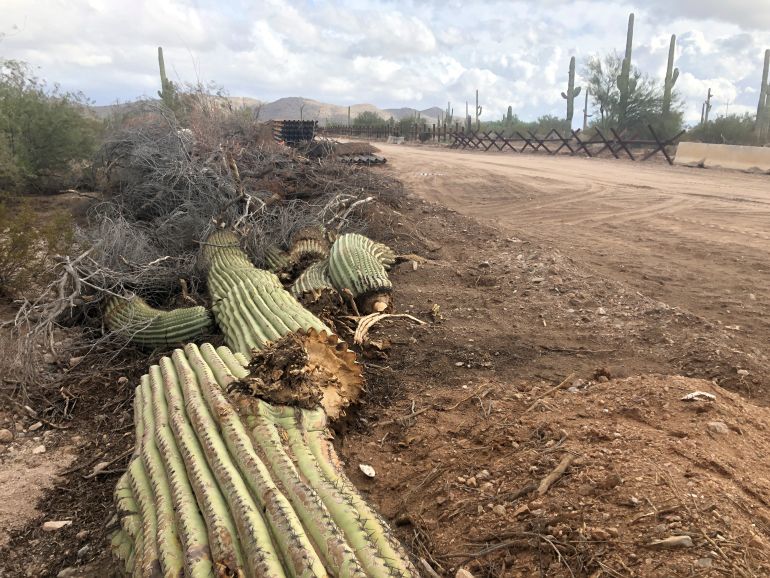An “entire mountainside” is said to be in danger of collapse thanks to construction done during the Trump administration.
BESS LEVIN
VANITY FAIR
SEPTEMBER 8, 2023

JOSHUA ROBERTS/GETTY IMAGES
Remember Donald Trump’s Mexico border wall that he made the centerpiece of his 2016 campaign, caused the longest government shutdown in US history, and that he—to this day—continues to lie about? In a development that should surprise exactly no one, it turns out that that wall—or, y’know, the parts of it that were actually built—has caused major damage to basically everything it’s touched.
According to a new report released by the Government Accountability Office this week, the roughly 450 miles of wall that went up during the Trump administration harmed everything from water to endangered species to Native American cultural sites. Monument Hill, for example, a memorial in Arizona used for religious ceremonies that remains important to a number of Indigenous communities, was “irreparably damaged when contractors used explosives to clear the way for expanding an existing patrol road.” Similarly, Tohono O’odham Nation officials reported to the GAO that a sacred burial site near Quitobaquito Springs was destroyed when contractors cleared a large area there.
Elsewhere, the report notes that:
SEPTEMBER 8, 2023

JOSHUA ROBERTS/GETTY IMAGES
Remember Donald Trump’s Mexico border wall that he made the centerpiece of his 2016 campaign, caused the longest government shutdown in US history, and that he—to this day—continues to lie about? In a development that should surprise exactly no one, it turns out that that wall—or, y’know, the parts of it that were actually built—has caused major damage to basically everything it’s touched.
According to a new report released by the Government Accountability Office this week, the roughly 450 miles of wall that went up during the Trump administration harmed everything from water to endangered species to Native American cultural sites. Monument Hill, for example, a memorial in Arizona used for religious ceremonies that remains important to a number of Indigenous communities, was “irreparably damaged when contractors used explosives to clear the way for expanding an existing patrol road.” Similarly, Tohono O’odham Nation officials reported to the GAO that a sacred burial site near Quitobaquito Springs was destroyed when contractors cleared a large area there.
Elsewhere, the report notes that:
Construction disrupted water flows, and in turn, exacerbated flooding.
The clearing of land for the wall “damaged native vegetation.”
Clearing land without reseeding it “allowed invasive species to take root.”
As a result of the construction work, some ponds in the San Bernardino National Wildlife Refuge in Arizona “are now void of water, which makes it difficult to maintain water levels in other ponds that have threatened and endangered fish species.”
“The barrier system has…substantially elevated the risks of the ocelot’s extinction in the US.”
A large construction staging area erected in the Pajarito Mountains in Arizona caused silt to drain “down the side of the mountain and, according to Forest Service officials, is beginning to fill a human-made pond, threatening to eliminate it as a drinking source for cattle and wildlife. Moreover, the entire mountainside is in danger of collapse, according to a Forest Service official.”
In a statement shared by Politico, Representative Raúl Grijalva, who requested the report, said, “This racist political stunt has been an ineffective waste of billions of American taxpayers’ dollars—and now we know it has caused immeasurable, irreparable harm to our environment and cultural heritage as well.”
In related news, Republicans have added funding to expand Trump’s wall to their list of spending demands, with some GOP reps suggesting they would shut down the government if they don’t get it.
US border wall construction damaged Native burial site: Government report
New report has found that efforts to expedite construction came at expense of sensitive ecosystems, Indigenous sites.
SOURCE: AL JAZEERA



No comments:
Post a Comment